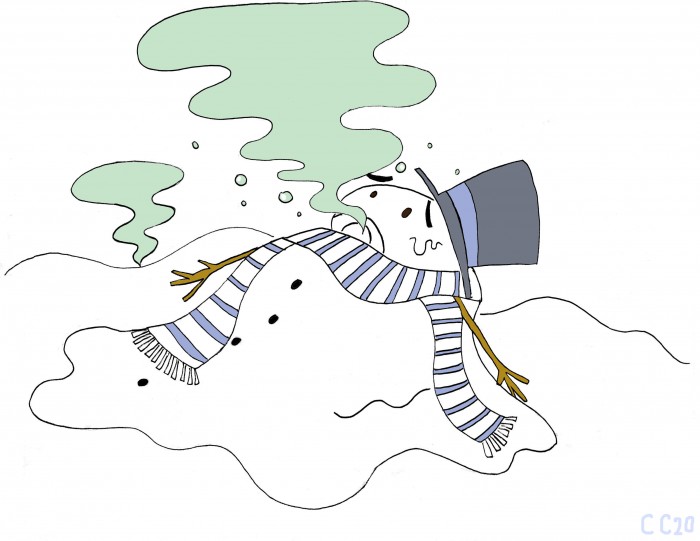The white blanket that covers everything and anything after a snowfall may not be as pure and untarnished as it appears. A recent study from McGill University discovered that freezing temperatures and fallen snow can change the way compounds found in air—air particulates—are distributed. Yevgen Nazarenko, a postdoctoral fellow from McGill’s Department of Atmospheric and Oceanic Sciences and a researcher with the study, explained that snow is the perfect pollutant trap.
“If you go to polluted regions like some cities in China and India […] or even stand near some major roads, especially where they have a lot of diesel engines, you can see the air pollution,” Nazarenko explained. “You can physically see the particulates in the air or you see the brown smog.”
In areas where pollutants aren’t as visible, like Montreal for example, toxins are still absorbed by the snow, making them present in higher concentrations and potentially harmful.
Nazarenko and his team found increased levels of four specific petroleum-derived chemicals—benzene, toluene, ethylbenzene and xylenes (BTEX)—that have been shown to be toxic and carcinogenic. Benzene is quickly and effectively absorbed into the body, causing drowsiness, confusion and headaches. High enough levels (>10,000,000 parts per billion) can lead to death. Toluene and ethylbenzene are eagerly absorbed from the gastrointestinal tract after ingestion and can cause kidney and liver problems. Xylenes negatively impact the nervous system, affecting muscle coordination and balance. These monocyclic molecules are small—they can have width of about 240pm. As a result, they can enter the human respiratory and circulatory systems with ease, leading to increased incidences of cancer and cardiovascular pulmonary disease. Snow is an extremely efficient pollutant trap, because it’s a mixture of water and ice.
“Snow is assembled [from] minute crystals with very high surface [areas] and, above -20 degrees Celsius, snow has a quasi-liquid water phase,” Nazarenko explained. “You have a lot of surfaces and various phases for absorption of the solution of substances into the snowpack whereas in water, you have much lower surface area for contact with air pollution.”
Immediate exposure of heated emissions from exhaust pipes to the cool winter atmosphere causes gases to condense into particulate form, which acts to increase snow’s absorption. Despite these factors, many agencies have continued to ignore snow pollution.
“Much of the environmental protection regulations and standards are based on warm temperature research and don’t take into account the presence of snow, cold, freezing temperatures,” Nazarenko said.
This is because calculating these factors in cold weather can be difficult, expensive, and often inaccurate. To address this problem and isolate vehicle pollution data, the research team at McGill created a system where they eliminated various environmental factors like changes in wind speed, wind pumping—wind blowing through the snowpack—structure of the snowpack, interaction between surfaces like vegetation and buildings, and other pollutant sources. They collected freshly fallen snow from Parc du Mont-Royal which they kept at freezing temperature and measured the pollutant levels in the sample as a blank. The snow was then exposed to diluted exhaust from a gasoline engine and analysed.
Thus far, this study serves as a starting point for further research.
“Certain chemicals do undergo various chemical reactions due to photochemistry, pollution in the environment and in snow is not constant,” Nazarenko said. “Whatever is absorbed there, whatever your starting pollutants are, is not necessarily all going to remain in that form.”
More studies have to be conducted to identify the exact type and quantity of pollutants and to determine exactly what the environmental and health implications are. The end result may be that policy makers will encourage research in this field and update emission standards.








